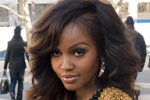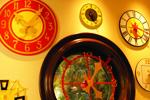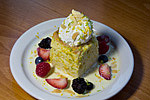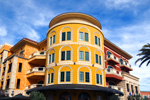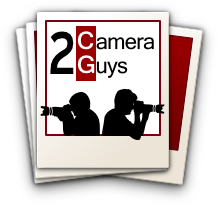Best Camera under $200
- Shootout
- Panasonic DMC SZ1
- Sony DSC WX50
- Nikon Coolpix S6300
- Canon A4000 IS
THIRD PLACE
Nikon Coolpix S6300
Nikon Coolpix S6300
Nikon may dominate the DSLR market, but it's not as impressive when it comes to point-and-shoot cameras. The Nikon Coolpix S6300 is our third-place camera in our look at the best cameras under $200, because it just can't cut it when it comes to image quality. Unlike the Sony DSC-WX50, which constantly spit out underexposed photos, the Nikon has the opposite problem: all of its photos seem to be overexposed and undersaturated.
The S6300 beats out our last-place camera, the Canon PowerShot A4000 IS by just a hair -- it's only slightly better when it comes to picture quality, but the Nikon has more features, including high-end options such as 3D photography.
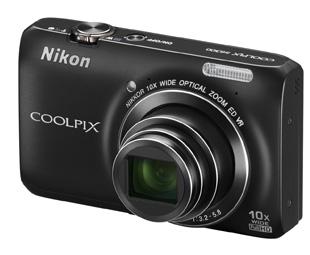 |
What Works:
- Produces good, crisp detail in some images
- Fastest shutter-to-shutter speed of the bunch
- Records 1080p/30fps video
- Scroll-wheel control for quickly flipping through settings
- 3D photos
What Doesn't Work:
- Images are often over-exposed and washed out
- Flash is too bright and direct
- Skin tones are pinkish
- You have to hold down the power button to turn the camera on (it's not instant)
- Thicker, heavier than other cameras in this shootout
- Buttons and latches feel cheap
A Look at the Nikon Coolpix S6300
Design
The Nikon Coolpix S6300 is the bulkiest and heaviest camera in this shootout. That's not to say it's much larger than the other cameras -- it's not -- but it is the heaviest at 160 grams (with battery and SD card installed). That's 15 grams heavier than the Canon PowerShot A4000 IS, and 43 grams heavier than the Sony DSC-WX50, which is our lightest camera.
The S6300 has a matte metal exterior and a two-tone design -- the front is one of the S6300's four colors (black, blue, red, and silver), while the back is black. This design makes the S6300 look a little cheaper than the other cameras in our shootout, all of which feature solid-color cases with silvery accents. The S6300's case feels mostly sturdy, but the door that covers the battery and SD card is a little wobbly. The buttons on the back are plastic and feel robust, but the scroll wheel is a little shaky.
Speaking of which, the S6300 has a scroll-wheel for quickly moving through camera settings. This is a nice touch, and the S6300 is one of only two cameras in this shootout to have a scroll-wheel -- the other camera is the Sony WX50. The Nikon's scroll-wheel isn't quite as useful as the WX50's, however, because it only functions when you're already inside a menu. The Sony's scroll-wheel functions inside menus, but also lets you scroll quickly through picture modes without going into the menus.
Picture Quality
In our picture quality tests, the S6300 did not perform well. In fact, it came in dead last in seven of our 15 test photos. Images from the S6300 were consistently overexposed, with light, washed-out colors. And of course, turning the overwhelmingly bright flash didn't help this one bit.
For example, take a look at this outside scene from the Nikon S6300, as compared to the same scene from the Panasonic DMC-SZ1:
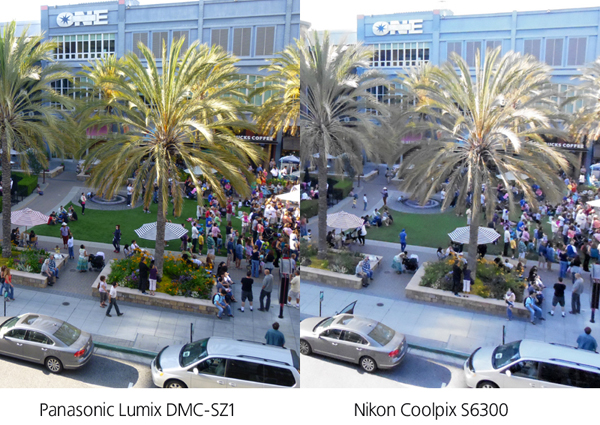
That said, the S6300's picture quality wasn't all bad. Though photos were often overexposed, the S6300 does manage to capture some crisp details and good metallic tones. To see an example of this, open up the PhotoScope and compare the Nikon S6300 with the Canon A4000 IS:
Move the magnifying glass over the yellow Coleman's Mustard can, and you'll see that the Nikon does a much better job of capturing the crisp details of the label.
Features
The S6300 isn't the best camera in terms of picture quality, but it does offer an attractive array of features rivaled only by the Sony WX50. The S6300 has 20 preset scene modes, including 3D photography. It doesn't have the gimmicky presets that we saw on some of the other cameras, such as tilt-shift and Toy Camera. However, it does have a few photo filters, including the sort-of-cool color isolation mode that lets you take black and white photos with just one color.
The Nikon's color isolation mode isn't quite as good as the Sony's, however, and you will see your one color seeping into areas where it shouldn't be...
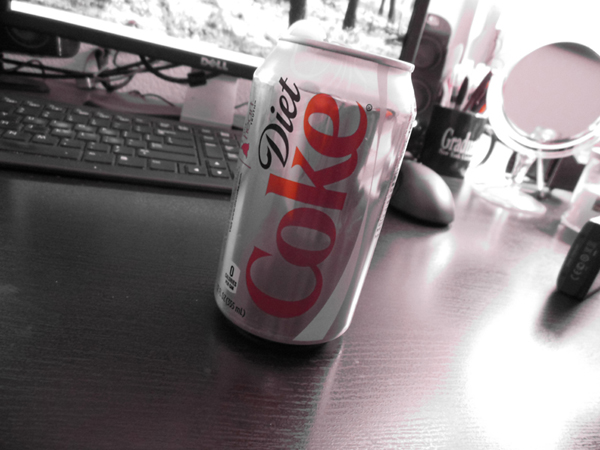
Nikon S6300 color isolation not as effective as the Sony WX50
The S6300 also records video in 1080p at 30 frames per second. It's the only camera in our shootout to record in 1080p (the Sony records in 1080i). Video on the Nikon S6300 looks smooth. The only way it would look better is at 60 frames per second progressive, but none of our cameras under $200 can do that. The S6300 has a mini-HDMI out port, so you can connect directly to your HDTV to watch your videos on the big screen.
The Verdict
The Nikon Coolpix S6300 has some pretty high-end features, including a 3D shooting mode and 1080p video recording, but it's not a high-end camera. Instead, it features a budget-y (read: ugly and cheap-looking) design, and it lacks good picture quality. Plus, it's heavier than the rest of our cameras, and it's definitely ventured from "I could put this in my pocket" to "Do I really want to carry this and my phone?" Ultimately, you'll have to decide if the extra features are worth it. But if you don't have a 3D HDTV, and you don't shoot a lot of video, you may just want to stick with your smartphone.
